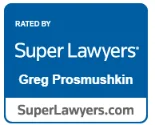Seat Belt Defect Failure in Philadelphia
Statistics have shown time again that seat belts save lives. However, when these devices are poorly designed or defective, they may cause catastrophic injuries. In an accident, a faulty seat belt can unlatch from the clasp. Testing has shown high forces of an accident may cause a latch to release, even though the individual has properly secured himself or herself into the seat before the accident.
Sometimes, a police officer may note contrary to this proper safety protocol causing many surviving victims to insist that he or she was securely belted but fell victim to the product’s defects.
Did you know that it has only been since the 70’s that the federal government required that all states make laws that require the use of seat belts? States were forced into making laws requiring mandatory use of seat belts, lest they lose their funding for other state projects from the federal government. Through the Federal Motor Vehicle Safety Standards (FMVSS), the government made regulations that the states had to adopt. They were pressured to adopt these regulations because seat belt use saves lives.
If you were alive when this change took effect, it would have seemed as though it happened overnight. American car manufacturers immediately changed their vehicles to accommodate the laws. In the American manufacturer’s view, people would only begin to wear seatbelts if those belts were comfortable to use by the consumer. This emphasis on comfort gave birth to seat belts that were loose and which would, therefore, frequently become twisted.
Even after you fastened your belt, these belts would introduce slack to make the occupant feel like they were not even wearing the belt. On the other hand, many European companies like Mercedes and BMW fitted their cars with snug and tight belts and had devices on them to ensure that they were continuously snug around the occupant. Both the loose and the tight-produced seatbelt systems were riddled with defects.
On the American side, the belts operated like a window shade so that any odd movement by the user would inadvertently add slack into the belt so that when a significant frontal or offset frontal crash would occur, the occupant’s head would strike parts of the interior of the car which it was not supposed to strike, usually causing death, or else horrific injuries. The European belts were too tight and had no play in them at all, which would also lead to injuries in the event of a frontal or offset frontal crash.
If you or a loved one were involved in a Car Accident in which you suspect that the seatbelt did not do its job correctly, call our office for a free consultation. At The Law Offices of Greg Prosmushkin, P.C., our Philadelphia Car Accident Lawyers and staff can assist you in claiming the seat belt manufacturer.
A car is an expensive undertaking, and the law recognizes this reality. The law provides that a car must be “crashworthy.’ What does this mean? It means a car should be able to keep you safe under reasonably foreseeable conditions or events.
This means that if you are driving the car at 35 mph, the car is expected to not blow up, roll over, or behave in a manner that it should not. Providing secure seatbelts falls within this duty to make a crash-worthy car. So if there is a collision, the belt should provide reasonable protection and perform correctly. To say that the belt is defective is that the car in which the belt is being used is not crash-worthy.
To determine whether the seat belt is defective or not or to see whether you have a true crashworthy case, you must take the following steps once you or a loved one is involved in a Car Accident:
- Preserve the car. Failure to do this can ruin the case. We must see and examine the belt in the car.
- Preserve the belt. The product within the car (a product itself) must be preserved by the party controlling it when the incident occurred, or else you will be charged with spoliation of evidence. If you spoil the evidence, the case will be dismissed with exceptions.
- Go to the scene of the incident and collect evidence of speed. This means a collection of skidmark photographs and debris left behind.
- Preserve any onboard recording system. These days, with computer systems built right into vehicles, we can tell how fast the driver was going (this is especially important if it was a single Car Accident, such as hitting a deer or telephone pole).
At The Law Offices of Greg Prosmushkin, P.C., we know how to preserve the evidence and conduct an investigation that will allow experts to determine whether your car was truly crashworthy – and whether the belt complained of was indeed defective. As always, the consultation is free, and if necessary, we will come to you, depending on your injuries and ability to be mobile.






